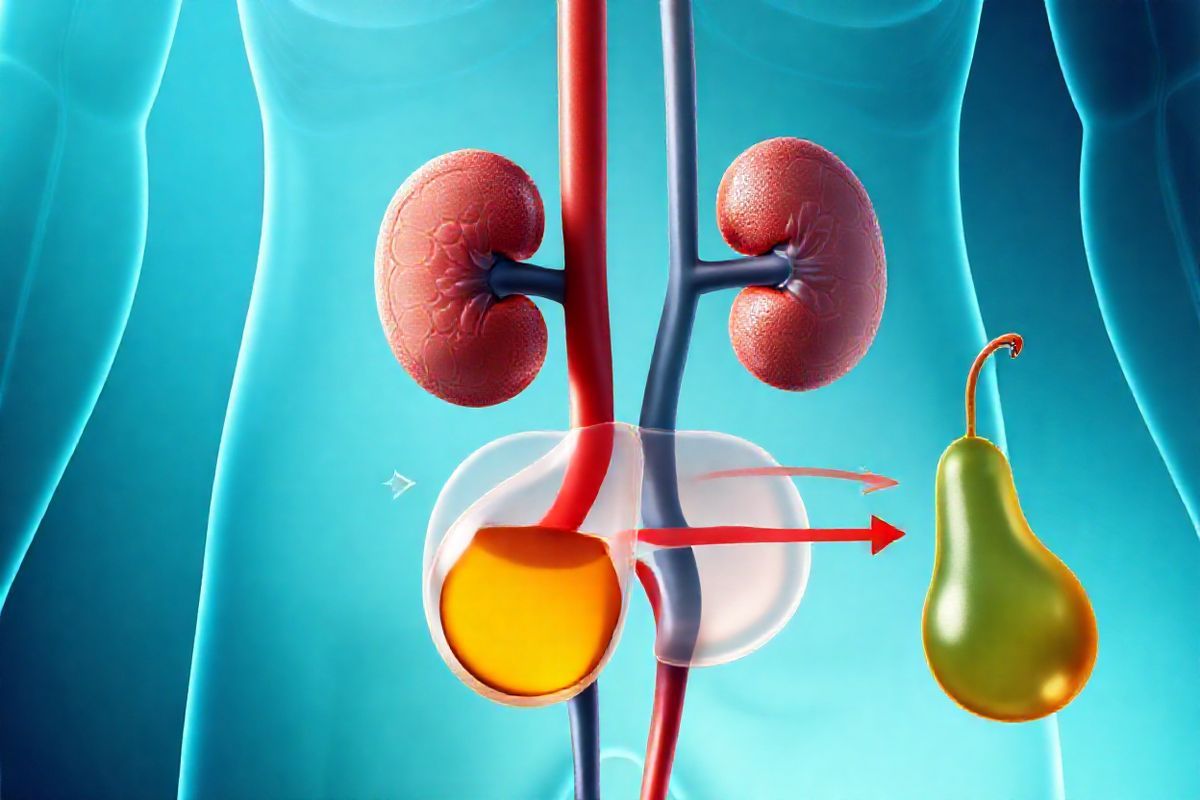Table of Contents
What is Vesicoureteral Reflux (VUR) and Why It Matters?

Vesicoureteral reflux (VUR) is a medical condition characterized by the backward flow of urine from the bladder into the ureters and sometimes reaching the kidneys. This condition can significantly increase the risk of urinary tract infections (UTIs) in affected individuals, particularly children. It is estimated that VUR affects about 1-3% of all infants and children, making it a common urological issue that can lead to serious complications, including kidney damage if left untreated (Urology Health, 2023).
Understanding VUR is crucial, as the condition often goes undiagnosed until a child experiences recurrent UTIs or kidney infections. In the case of VUR, the normal one-way flow of urine is disrupted due to anatomical abnormalities. This can result in the urine carrying bacteria from the bladder back to the kidneys, potentially causing infections and scarring, which may affect kidney function over time (Cincinnati Children’s, 2023).
The Anatomy of VUR: How Urine Flows and Where It Goes Wrong
To comprehend VUR better, it is essential to understand the anatomy of the urinary system. The kidneys filter blood and produce urine, which travels down through tubes called ureters to the bladder. Normally, the ureters enter the bladder at a specific angle that prevents urine from flowing back up. However, in VUR, a defect in the ureter’s entry point into the bladder—a shorter ureter or an improperly functioning valve—can allow urine to reflux back into the ureters and kidneys (Hopkins Medicine, 2023).
TablOverview of Urinary System Anatomy
| Structure | Function |
|---|---|
| Kidneys | Filter blood and produce urine |
| Ureters | Transport urine from kidneys to bladder |
| Bladder | Stores urine until excretion |
| Urethra | Excretes urine from the bladder |
Grading Vesicoureteral Reflux: What the Levels Mean for Patients
VUR is graded on a scale from I to V based on the severity of the reflux and the extent of urine backflow. The grading system helps determine the management strategies for affected children:
- Grade I: Urine refluxes into the ureter only, with no dilation.
- Grade II: Urine refluxes into the ureter and the renal pelvis without dilation.
- Grade III: Urine refluxes into the ureter and renal pelvis, causing mild dilation.
- Grade IV: Moderate dilation of the ureter and renal pelvis is observed.
- Grade V: Severe dilation of the ureter, renal pelvis, and calyces (American Academy of Pediatrics, 2023).
The higher the grade, the more likely the reflux is to cause complications. Children with lower grades (I-III) often outgrow the condition as their urinary tracts mature, while those with higher grades (IV-V) have a greater risk of kidney damage and may require surgical intervention (Urology Health, 2023).
Treatment Options for VUR: From Observation to Surgical Solutions
The management of VUR can vary widely depending on the grade of reflux, the frequency of UTIs, and the child’s overall health.
-
Observation: For children with low-grade VUR (grades I-III), a watchful waiting approach may be taken, as many outgrow the condition. Regular follow-ups with urine tests to check for infections may be all that is needed.
-
Preventive Antibiotics: In cases where the risk of UTIs is high, low-dose antibiotics may be prescribed to prevent infections. This is especially common in higher grades of VUR (grades III-V) (Urology Health, 2023).
-
Endoscopic Treatment: For some patients, a minimally invasive procedure can be performed to inject a bulking agent at the ureter’s entry point into the bladder, helping to prevent reflux.
-
Surgery: If VUR is severe or persistent, surgical options like ureteral reimplantation may be considered. This involves repositioning the ureters to create a longer tunnel through the bladder wall, effectively preventing urine from flowing back (Cincinnati Children’s, 2023).
TablTreatment Options for VUR
| Treatment Option | Description |
|---|---|
| Observation | Monitoring without immediate intervention |
| Preventive Antibiotics | Daily antibiotics to reduce UTI risk |
| Endoscopic Treatment | Injection of a bulking agent to stop reflux |
| Surgery | Reimplantation of ureters to correct reflux |
The Importance of Early Diagnosis and Management of Vesicoureteral Reflux

Early detection and management of VUR are crucial to prevent complications such as recurrent UTIs and kidney damage. If left untreated, VUR can lead to kidney scarring and impaired function, which may manifest as high blood pressure or chronic kidney disease later in life (Urology Health, 2023).
The diagnosis of VUR typically involves imaging studies such as a voiding cystourethrogram (VCUG) and renal ultrasound. These tests help visualize the urinary tract and assess for any abnormalities (Hopkins Medicine, 2023). Prompt evaluation and initiation of treatment are essential, especially for infants and young children who are at a higher risk for complications (American Academy of Pediatrics, 2023).
FAQs
1. What causes VUR?
Most children are born with VUR due to congenital malformations of the urinary tract. In some cases, it may develop due to bladder dysfunction or other neurological conditions.
2. How is VUR diagnosed?
VUR is diagnosed through imaging tests like a voiding cystourethrogram (VCUG) or ultrasound, often following a urinary tract infection.
3. What are the long-term effects of untreated VUR?
Untreated VUR can lead to recurrent kidney infections, kidney damage, hypertension, and potentially chronic kidney disease.
4. Can VUR be prevented?
While VUR is often congenital and cannot be prevented, maintaining good urinary habits and promptly treating urinary infections can help mitigate risks associated with the condition.
5. Will my child outgrow VUR?
Many children with low-grade VUR (grades I-III) outgrow the condition as they develop. Regular follow-up with a healthcare provider is important to monitor progress.
References
- Urology Health. (2023). Vesicoureteral reflux (VUR): Symptoms, diagnosis & treatment vur)
- Cincinnati Children’s. (2023). Vesicoureteral reflux (VUR). Retrieved from https://www.cincinnatichildrens.org/health/v/vesicoureteral-reflux
- Hopkins Medicine. (2023). Vesicoureteral reflux (VUR). Retrieved from https://www.hopkinsmedicine.org/health/conditions-and-diseases/vesicoureteral-reflux-vur
- American Academy of Pediatrics. (2023). Vesicoureteral reflux (VUR) in infants & children. Retrieved from https://www.kidney.org/kidney-topics/vesicoureteral-reflux-vur-infants-children











